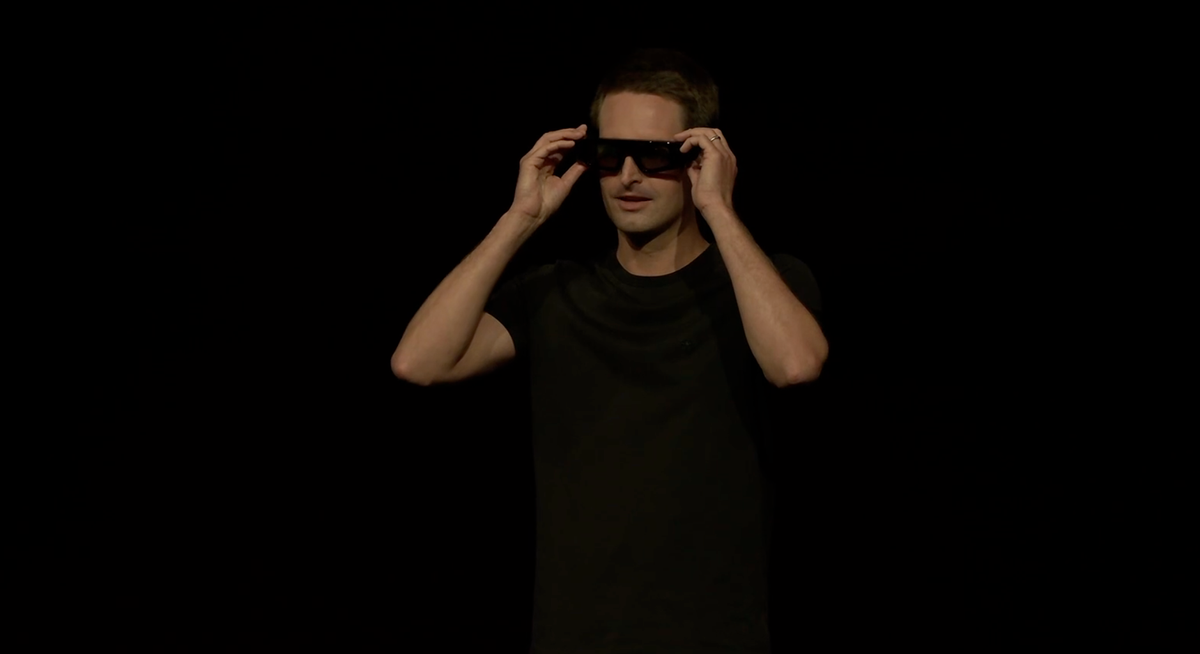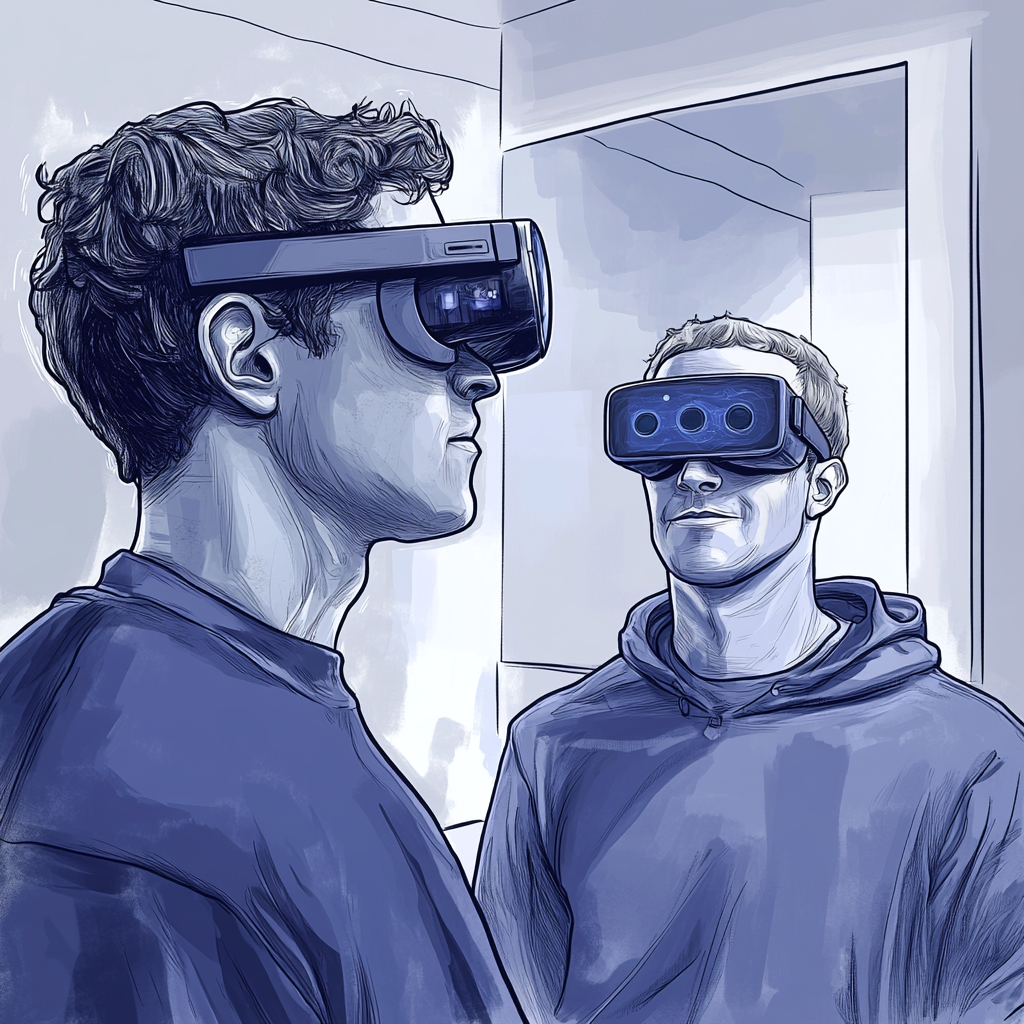Snap Keeps Augmenting Their Tricky Reality
/cdn.vox-cdn.com/uploads/chorus_asset/file/25619621/247271_Spectacles_2024_NHernandez_Melo_0015.jpg)
I've been compelled by the idea of Snap's Spectacles since day one, eight years ago. And while that initial dive into the space got some buzz, the product line still failed to set the world on fire. The timing was still off. So Snap pulled it back, working on it in a less forward-facing way, focused on developers for the nascent technology. In other words, pretty much exactly what I thought Apple should have done with the Vision Pro instead of launching a $3,500 device into the wild with consumers, with little content to boot – quite literally. And while Apple is still figuring out how best to move forward with the line, Snap continues their quest – here's Alex Heath:
Snap’s fifth-generation Spectacles have a richer, more immersive display. Using them feels snappier. They weigh less than their predecessor and last longer on a charge.
Those are exactly the kinds of upgrades you’d expect from a product line that’s technically eight years old. But the market for Spectacles — and AR glasses in general — still feels as nascent as ever.
Snap has an idea for what could change that: developers. These new Spectacles, announced Tuesday at Snap’s annual Partner Summit in Los Angeles, aren’t being sold. Instead, Snap is repeating its playbook for the last version of Spectacles in 2021 and distributing them to the people who make AR lenses for Snapchat. This time around, though, there’s an extra hurdle: you have to apply for access through Lens Studio, the company’s desktop tool for creating AR software, and pay $1,188 to lease a pair for at least one year. (After a year, the subscription becomes $99 a month.)
I think it's fair to wonder how many developers are realistically going to jump through such hoops. There's a real chicken-and-egg problem here, obviously. To compel them, the early product is going to have to be really good – or the vision that much better. On the current product side, it still sounds pretty mixed:
While the hardware for Spectacles has improved, the software is still pretty basic for a standalone device. Here, it’s obvious that Snap hopes developers will help it come up with compelling use cases. For the most part, everything I experienced was in line with what I’ve come to expect from AR hardware demos over the years: lightweight, gimmicky apps that show off the hardware but aren’t experiences I’d return to in my free time.
But the hardware does sound better:
The first thing that stands out when you put the new Spectacles on is the improved display quality and interface. Colors were richer and higher resolution. The Snap OS powering the glasses has been completely redone and felt considerably more polished, even if it’s still barebones. The main way you navigate Spectacles is through hand tracking and voice control, which felt inherently slow at times but never dragged in a way that felt glitchy.
Hand-tracking (and eye-tracking – something which is undoubtedly far harder and more expensive) is clearly something Apple got right with the Vision Pro, and now it clearly feels like the entire industry is following – not only Snap, but Meta as well (more on them in a minute).
Snap says this model boasts a 46-degree field of view (up from 26.3 degrees for the previous version) and that its waveguide displays show 37 pixels per degree — a measurement Snap believes is the right way to measure AR display quality that is about 25 percent richer than before. The physical lenses of the glasses auto-tint when you’re looking at direct sunlight, allowing you to see what’s being projected onto your surroundings while outdoors.
During my demo, the field of view was noticeably wider than before but still nowhere near what you would expect from looking through a pair of normal glasses. More perplexingly, Snap’s own demos emphasized this fact; a golfing simulator I tried was constrained to a frustratingly small area of the real world around me. Ultimately, this limited field of view makes augmented reality considerably less engaging than the real world, which, in turn, makes putting a 124-gram pair of smart glasses on your face feel unnecessary.
This isn't great (nor is Apple's field of view in the Vision Pro, by the way). But that's also clearly a technological hurdle that will be overcome in a relatively short amount of time, one imagines. More challenging (and also perhaps related) is the battery life:
The fourth generation of Spectacles from 2021 overheated multiple times during my demo but this latest version didn’t crash once, even while I was wearing them outside during a record heat wave in Los Angeles. Snap says the battery life has improved from about 30 to 45 minutes on a single charge. A USB-C cable is included that allows for continuous power when plugged into the temple of the glasses.
Yeah that's obviously not going to be good enough for a mass market consumer device. I don't even know if doubling that time would be good enough if this is a product Snap envisions you wearing all the time, out and about. And barring any major battery breakthroughs, this is going to be an issue for a while, it feels like.
Meanwhile, Meta is coming, fast:
Snap released the first pair of Spectacles back in 2016. Since then, bigger players — namely Meta — have signaled that they, too, are building AR glasses. Apple is working on them separately from the Vision Pro, and Google is developing AR glasses with Magic Leap and Samsung. When I ask Spiegel about the growing competition, he simply responds: “Sorry, so who of those have AR glasses?”
It’s a point he won’t be able to make much longer. Meta will show off its long-rumored AR glasses prototype, codenamed Orion, at its Connect conference next week. (Like Spectacles, they won’t be sold commercially.) Meanwhile, Meta has found early success with its smart glasses partnership with Ray-Ban. On Tuesday, it announced a new, 10-year deal to make smart glasses with Ray-Ban’s parent company, the eyewear giant EssilorLuxottica.
In a way, Meta's Ray-Ban product feels a bit like the original version of Spectacles – just built in and for a world where AI is a reality. And now they're both clearly going for the world of "what's next" – with both undoubtedly believing it will be a mixture of AI and AR. Snap's problem there – despite or perhaps because of being first – is that Meta has the time and money to work on such things. Snap... well, they're still trying to get that permission from Wall Street.
It feels like the Snapchat redesign they also just unveiled (though still in testing) is a good step in the direction of boosting their actual business right now – advertising. But they almost have to hope that the time of AR glasses is further out than perhaps they'd like right now, so Meta can't just pump money in and output the right product in the space. Or Apple, for that matter. But they're distracted...
Update September 19, 2024: Some longer thoughts on the actual Spectacles presentation...






